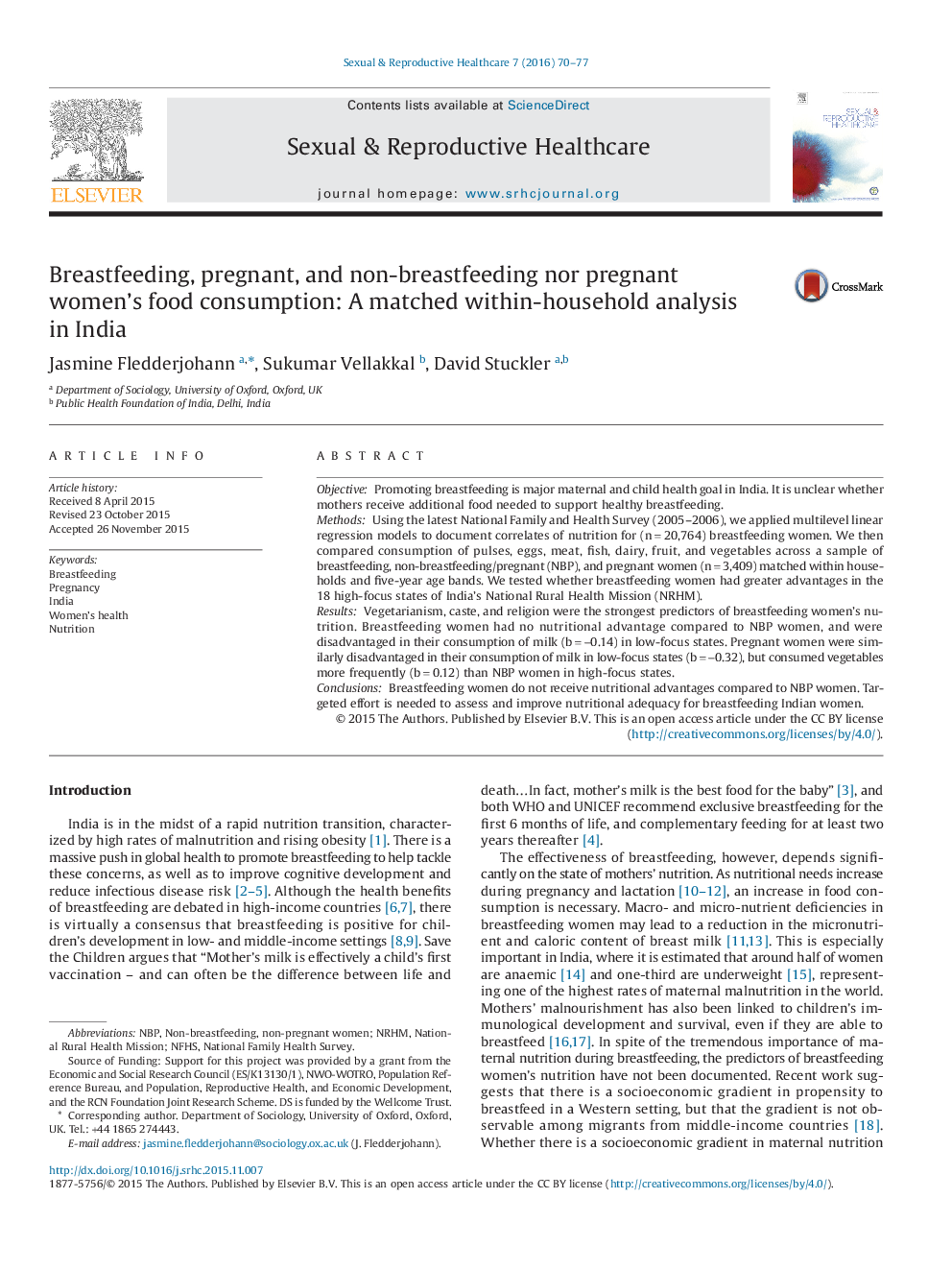| Article ID | Journal | Published Year | Pages | File Type |
|---|---|---|---|---|
| 5866095 | Sexual & Reproductive Healthcare | 2016 | 8 Pages |
â¢Mothers require additional calories to support healthy breastfeeding. It is unclear whether this additional intake need is being met, especially in India where undernutrition is highâ¢We matched women within households to compare food consumption frequencyâ¢Breastfeeding women are not nutritionally advantaged in the household across food items, and are disadvantaged in their access to milkâ¢Breastfeeding women's nutrition should receive greater programmatic attention in India
ObjectivePromoting breastfeeding is major maternal and child health goal in India. It is unclear whether mothers receive additional food needed to support healthy breastfeeding.MethodsUsing the latest National Family and Health Survey (2005-2006), we applied multilevel linear regression models to document correlates of nutrition for (nâ=â20,764) breastfeeding women. We then compared consumption of pulses, eggs, meat, fish, dairy, fruit, and vegetables across a sample of breastfeeding, non-breastfeeding/pregnant (NBP), and pregnant women (nâ=â3,409) matched within households and five-year age bands. We tested whether breastfeeding women had greater advantages in the 18 high-focus states of India's National Rural Health Mission (NRHM).ResultsVegetarianism, caste, and religion were the strongest predictors of breastfeeding women's nutrition. Breastfeeding women had no nutritional advantage compared to NBP women, and were disadvantaged in their consumption of milk (bâ=ââ0.14) in low-focus states. Pregnant women were similarly disadvantaged in their consumption of milk in low-focus states (bâ=ââ0.32), but consumed vegetables more frequently (bâ=â0.12) than NBP women in high-focus states.ConclusionsBreastfeeding women do not receive nutritional advantages compared to NBP women. Targeted effort is needed to assess and improve nutritional adequacy for breastfeeding Indian women.
